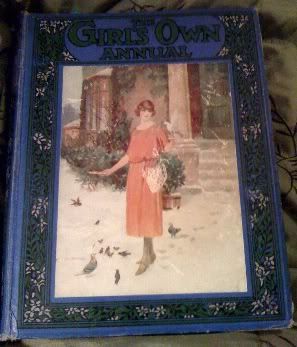
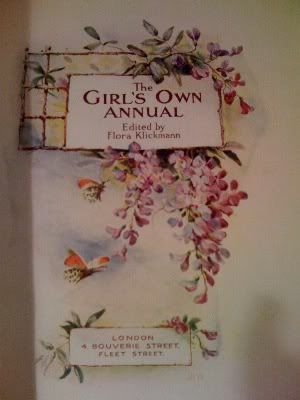
This book was edited by Flora Klickman, who lived in Brockweir, a little medieval village connected by ferry with Wales across the rive Wye and near Tintern Abbey. She became the editor of The Girl's Own Paper upon the death of the previous editor. She was already a published editor of numerous books of crochet and craft and even had established herself as someone who was dedicated to conserving the patterns and styles of craft from earlier centuries. There are scholars who believe that The Girl's Own Paper, published by the Religious Tract Society, had an unstated purpose of molding the characters of young women back into the less emancipated behaviours and expectations of the 1800's. It did have articles of a highly moral nature - persuasive articles - about how girls and women could contribute to society through moral and demure behaviour, especially during the war years. There were overt articles like "The Discipline of the Affections" and "The Shining Way" which exhorted girls to not become worldly and told them that living in the city (London) would make them sad and weary as well as worldly. The long serialized stories always rewarded the young girl who had behaved well, while the girl who "lost her way amongst the temptations of the big city" received her just reward - an illegitimate child, poverty, estrangement from family, or worse. Here is a "heartening song" published in this edition:
Be strong! Don't let the foes you meet
Laugh at the faltering of your feet.
Be strong!
Be kind! Don't judge that other soul
Who seems to miss some higher goal.
We cannot tell what hindrance lay
Within his road of workaday!
God knows where life roads twist and wind;
God knows what care-thongs grip and bind.
Be strong - and kind!
The phrase "care-thongs grip and bind" certainly has a different meaning these days! ;) That made me laugh out loud!
But my favorite parts of the Girls Own Annuals are the needlework articles - this was something that Flora Klickman excelled at and she published many little books devoted solely to these patterns separate from the Girls Own Paper. Here are some examples from this 1921 - 1922 Annual collection.
In the early part of the century many women made their own unders. While this was mainly a sewing task, there are a few examples of knitted and crocheted unders and combinations (one piece underwear with connected camisole and tap pants - considered a French style). Most of the sewn examples showed crocheted or knitted lace inserts and edgings. The "summer underthings" were often made from silk or batiste with embroidery.
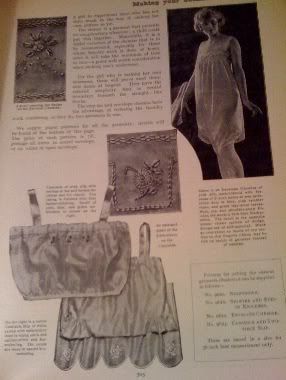
"Camisoles - the sort one likes - are always expensive to buy, and yet, given a little time and patience, one can make some delightful camisoles at little cost. An Envelope Combination made in wool is a decided novelty, and the one described... is as pretty as it is comfortable. It is knitted in four-ply Vest Wool, and is so shaped as to have no bulkiness at the waist, and yet the lower portion hangs full. You will certainly want to make this when you have seen it."
A "lower portion that hangs full" was as important 100 years ago as it is today!
There are many pattern for children and babies, but not all are included in the book pages - some require you to send in a few cents to cover postage of the pattern or the knitting and crochet directions. Many of the patterns have simple lines. This little toddler dress is one:
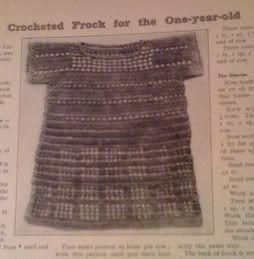
It is a fairly simple rectangle made on a foundation of 110 chains with single and double crochet and crocheted flat from the bottom up, so that the sleeves can be shaped by casting on 10 chains and the little scooped neck is created by turning and making the top rows of each sleeve separately.
While the silhouettes of childrens' clothes were simple shapes, they often had beautiful embellishments to brighten them up - applique, embroidery, or knitted and crocheted lace inserts. There are several pages of filet crochet inserts that could be used for childrens' linens, clothing, or underwear:
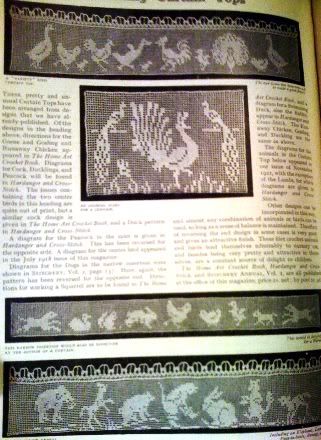
Flora Klickman often promoted her own books in the pages of the Girls Own Paper and these filet designs are from her publication "The Home Art Crochet Book". But the photos were large enough that an experienced crocheter could make the article just by counting stitches in the picture, as is true of the child's little dress above.
I love old hat patterns - some of them so outre that they couldn't be worn today...
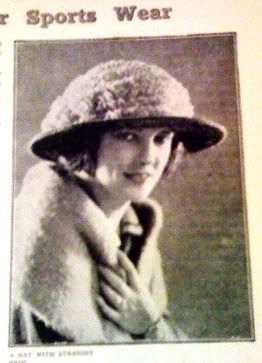
but some are perfect for my New England winters:
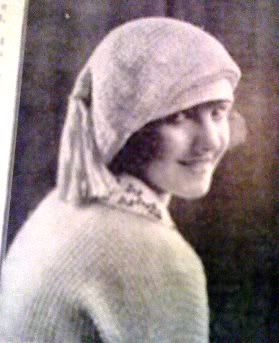
This is called A Becoming Tam o'-Shanter and I'll give the directions here, since it is out of copyright and in any case requires some translation from the obscure antique pattern-writing style which was vague at best.
For this pretty tam you will need two 1/4 lb. balls of "Esplen-d'or" cable yarn (this is an Aran weight) and a coarse steel crochet hook (about an F, depending on your yarn).
Chain 4 and join with a slip stitch into a ring.
1st round: Ch 3, 15 tr (remember that this was published in England so a treble crochet is a US double crochet) into ring, join to first tr.
2nd round: Ch 3, taking up back loop only (in each round), work 2 tr in each of 15 tr, join.
3rd round: Ch 3, tr into back loop of first tr (same st with sl st), 2 tr in next, tr in third st, 2 tr in next, continue around and join (45 tr).
4th round: Ch 3 *tr in each of 2 st, 2 tr in next, repeat around from * (60 tr), join.
5th round: Ch 3, *tr in each of 3 st, 2 tr in next, repeat from * around (75 tr), join.
Continue to increase 15 st in each round until 14 rounds with 12 st between increasings are made.
15th round: Ch 3, *tr in each of 12 st, thread over, draw a loop through next st, over, draw through 2 loops, keeping 2 st on hook, thread over, draw a loop through next st, (over, draw through 2 loops) 3 times, repeat from * around, join. Decrease 15 st this way in each of seven following rounds, then make four rounds without decreasing, and finish off.
The Tassel
Wind yarn 70 times over a 7-in. piece of cardboard. Cut along one edge and tie strands in centre with two 20-in. lengths of yarn. With these four ends make a ch about 2 in. long.
The Cover for Tassel
Ch 4 and join into ring, ch 3, 14 tr in ring, join, (ch 3, tr in back loop of each st, join) 3 times. Finish with a row of picots: dc (the US single crochet) in first st, *ch 4, dc in top of dc just made, dc in each of 2 st, repeat from * around and join.
Draw ch on top of tassel through the ring of cover and sew to centre of tam.
Cut and fold a bias strip of georgette (silk ribbon) about 2 in wide. cast off last row of tam with this fold, then make a band of silk which will fit your head size and sew to the last four rows inside tam. Sew in lining of self-coloured silk.
This last part might need some translation. In other words, you are going to fold up the last four rows of crochet and, as you bind off, crochet them to the inside of the tam. Then you will take your bias length of silk ribbon (bias so that it stretches slightly) and sew it to the inside of this folded under brim, so that the silk is against your forehead when you wear the tam. I like this idea, but I think I might do it without the double brim, which I think might feel too thick for me.
Fini!
Other enticing patterns in this book are sweaters, called "Knitted Blouses". Full patterns are given for these and they are charming, and - again, because they are styled with simple shapes sewn together - very easy to make.
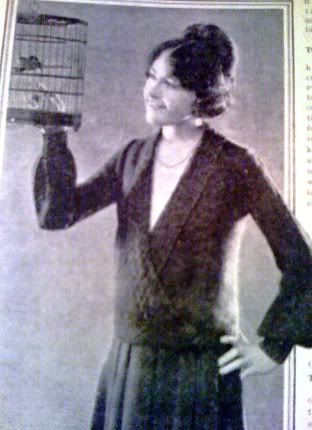
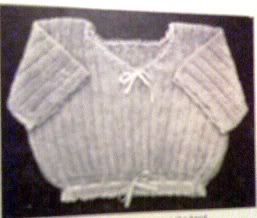
Another aspect of the Girls Own Annual that I love is the numerous articles on cooking such as "The Bachelor Girl's Supper" and "French Sitting-room Sweets". The full title of this last one is "French Sitting-room Sweets That can be Made with A Spirit Lamp". In other words, you don't even need a kitchen or a stove, but only a kerosene lamp. This allowed the young woman working in "the city" and living in a one-room studio apartment or who was boarding in one room in another person's house to make candies for gift-giving or selling at Holiday fairs - a great way to save and make a few extra pennies.
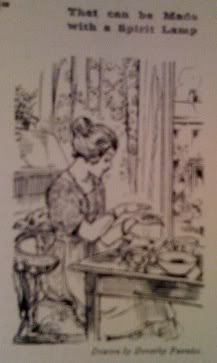
Here are a couple of the recipes that I have tried - only one requires the "spirit lamp". They were a great favorite at Christmas time with my friends!
Truffettes au Cafe:
1/2 lb best butter
1/2 lb best cocoa or finely grated chocolate (and some extra for coating)
3/4 lb plus 2 oz icing sugar (what we call Confectioner's Sugar)
1 tablespn coffee essence (I used instant coffee for this, which I think was the original meaning of "coffee essence" - 1 Tbl of liquid coffee flavouring would be too strong)
Beat the butter and sugar to a cream. Stir in the chocolate and coffee essence. Let the mixture stand till it has stiffened a little, so that you may handle it easily. Then form it into neat little balls the size of walnuts, and roll them in chocolate
which has been grated on a large grater, so that it is in small grains rather than powder (I've also used powdered chocolate for this and it was fine).
Arrange the finished trufflettes on dishes, and leave them till next day before putting them into frills and packing them in boxes.
They are Quite delicious - soft, rich, melting in the mouth. But they do not keep long. They are best when eaten within three days in summer, and a week in winter.
Rochers aux Amandes Grilles:
These are those rough lumpy chocolates with little bits of almonds in them, which you will find in all nice boxes of mixed sweets.
Blanch 1/2 lb almonds in boiling water, and skin them. (I bought almonds already peeled but I believe that you can take whole almonds and put them in a wire colander, and dip them into boiling water for a minute, so that the skins soften and are easy to peel off). Put them on the lid of your little lamp, and shake the lid over the heat till the almonds are nicely browned. Then chop them roughly, and add them to the truffette mixture (you can omit the coffee so that these have a different flavour).
Don't roll this in grated chocolate, but take up small lumps on two forks, roughening the surface as much as you can. Set the lumps on plates to dry.
~~~~~~~~~~~~~~~~~~~~~~~~~~~~~~~~
There you have it - a nice walk through a 1920's book for young women. Inspiring, yes? I think so!













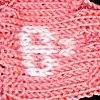

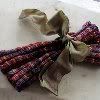

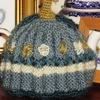



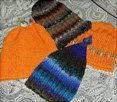



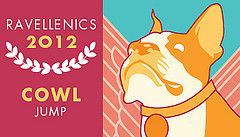
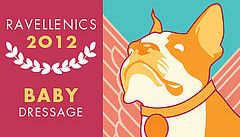






3 comments:
Those chocolate recipes are so tempting.
Yes - so simple, but they turn out very well!
A spirit lamp didn't burn kerosene, although perhaps in a pinch it could. It burned "Low Odor Turpentine Spirits" which has somewhat different burning properties. Lamps that were intended to burn spirits can be somewhat temperamental with kerosene.
Lamp Lover
Post a Comment